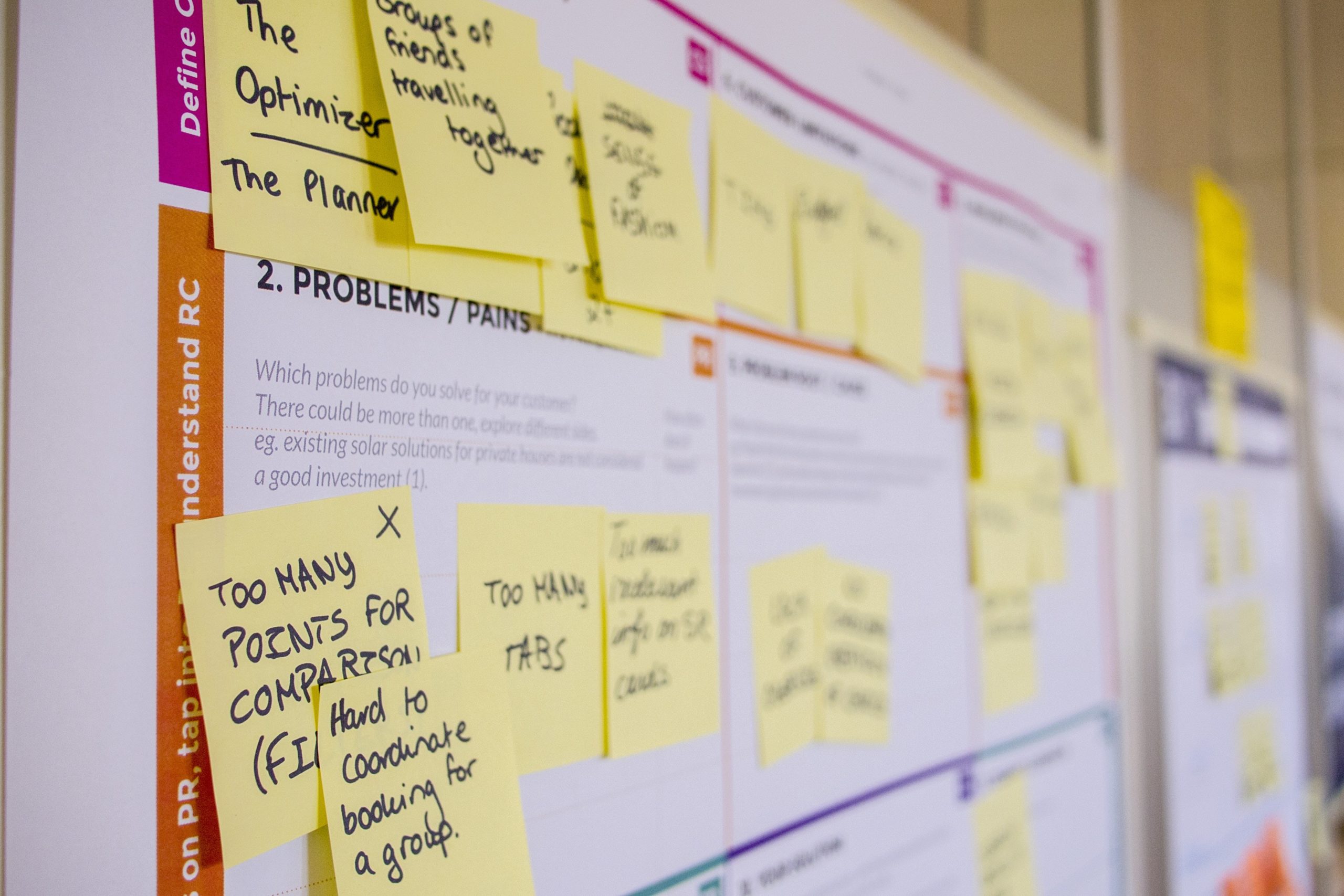It’s all well and good to want to have an awesome customer experience (CX). But as you’ve probably realised by now, you’ve got to actually have strategies in place which provide the basis for improved CX delivery.
In this guide, we’ll outline 12 examples of customer experience strategies and best practices, and how you can use these methods to achieve awesome results.
But first:
What is customer experience strategy?

We won’t beat around the bush here.
A CX strategy is basically a way of improving your organisation’s overall customer experience. It outlines the broad methodologies you’ll use to capture and retain customers and achieve your business goals.
You can then come up with more specific CX tactics, which are ways of carrying out your CX strategies.
For example, if your strategy is to better-connect with customers, tactics may include broadening your activities on Twitter, Facebook or Instagram, and trying out new email communication methods through your CRM.
Why use customer experience strategies?

Your CX processes can get very messy, very quickly, especially if you try to focus on too many things at once.
CX strategies can help to give some sort of direction to your customer-centric activities, helping you to stay on-track, and giving you a basis to measure success.
You don’t necessarily need to pick a number of strategies and say “OK, we’re doing this, this, and this”. The techniques we’re about to outline can be used for inspiration if you’ve already got CX processes you’re looking to broaden.
1. Make being a customer as easy as physically possible

Have a brainstorming session with your marketing team. Come up with the #1 difficulty your customers face as they interact with your business. Then, figure out the second and third-biggest difficulties. If you’re having trouble, look back at customer surveys – you could even try social media sentiment analysis.
Once you’ve uncovered these issues, begin attacking them. However, keep in mind the strategic goals of your organisation when designing these solutions. Think about how the changes will affect your business processes and efficiency in the long run.
For example, you may find that customers are struggling with your live chat module, and instead want to phone your team to resolve the issues they’re having. But expanding your capacity to answer inbound calls might not make financial sense.
When Amazon did this brainstorming activity, it essentially led to the birth of their Prime product.
- Shipping times were too long, so they made their own Prime shipping network.
- Checking out was too hard, so they introduced one-click ordering for Prime customers.
- Customers weren’t loyal to the Amazon brand – they just found the best price wherever it was available. So Amazon introduced Prime as a service you pay a monthly fee for – decreasing price sensitivity because customers felt like they were missing out if they didn’t take advantage of the fast shipping they’d already paid for.

Of course, not every business has the capability to just go and create their own delivery network! But getting creative with your pricing, payment, and checkout processes can be a great way to encourage brand loyalty.
2. Keep your ear to the ground
Your customers are going to be the first ones to let you know that things aren’t going how they’d like them to be.
The aim here is to cast your net as wide as possible. Someone who writes a negative Google review might not complete any of your surveys. And someone who does complete your survey may have never even thought to @ you on Twitter. It’s important to cover all the bases.
Begin by monitoring your social mentions, and anywhere that customers are leaving reviews.

While surveys can be useful, they’re not exactly perfect. If you run them without some sort of incentive for filling them out, you may miss out on a lot of feedback – both positive and negative. But if you do include an incentive (like entry into the draw for a prize) customers are likely to speak more positively of your service, in the hope it’ll win them the prize.
The best way to go about this are simple, to-the-point, post-interaction surveys. This way, the feedback will be hot off the press. Plus, if a customer just spent 10 minutes doing something on your website/app, they’re less likely to mind spending another 30 seconds filling out a form.
3. Be responsive

Following on from #2, when addressable concerns are raised, you have to be lightning-quick to respond – and you need to respond well.
A good response shows that you actually care. And if the customer honestly believes that you actually care, they’re much more likely to stick with you. The last thing you want is the customer feeling helpless or abandoned.
For the bigger firms out there, this also means being responsive to broader public relations events – whether positive or negative.
No matter how large your business, it’s a good idea to use Google Alerts if you aren’t already. Type in any variations of your brand name (and competitors, if you like), and the service will ping you when a web page mentioning one of these terms is published. If you’re getting too many results, filter it to only include news articles from reputable sources.
4. Refine your customer service structures

Apart from being responsive to customer concerns, you actually have to provide the right support to the people who need it. Investing in customer service can be incredibly valuable – both for improving brand perception and minimising customer attrition rates.
Remember, you’re not just spending money on maintaining existing relations here. Pull the data on how many leads or potential customers ask questions before buying – you may already have a sales team dedicated to the pre-sale nurturing process.
The person or team running your contact centre or IT help desk should be your first port of call.

You need honest answers to the following sorts of questions:
- Is our support team capable (both in terms of size and skill) of handling customer inquiries in a timely manner?
- How are our KPIs doing? Look at metrics like your first-contact resolution and service level. Are these readings good enough?
- Are customers able to communicate over their preferred channel, and is the process seamless? Think about the market segments you’re working with. If contacting you over email almost always yields a faster response from a CS rep than messaging you on Twitter, and you get a decent volume of questions on social media, it might be worth reallocating your resources to ensure more even coverage.
- What quality assurance measures do we have in place? Some organisations are coming to the realisation that manual QA is leaving a lot to be desired – issues are slipping through the cracks, and reviewing calls or tickets by hand takes an enormous amount of time. Your first step should be figuring out what QA actually means for your organisation, as different firms use it in different ways. Are you just checking the basics (like the greeting) or are you making a more objective analysis of the agent’s performance? Voice analytics is a potential solution to the conversational side of this problem for large-volume contact centres.
- Do our representatives have the data they need to provide the best-possible help? Ideally, you want your team to have instant access to a client’s prior contact notes and purchase history when they ask for help. This is what contactSPACE CallGuides® deliver in a call centre setting.
Like we mentioned earlier, you’ve got to ensure that the decision to make changes to your customer service processes fit in with your business goals, and have sound economic logic backing them up.
Upgrading your customer service technology solutions and/or making changes to your staffing structure are big decisions to make. However, if you have a clear business case, meaning you know what you want the change to achieve, and understand how this change will enable you to achieve better business outcomes, then you’re on the right path to making a worthwhile investment.
5. Streamline your sales processes

For SaaS businesses and other organisations with an inside sales team, you may face up to a hundred or more questions from a potential customer before they pull the trigger. Therefore, you have to consider your sales team as well as your customer success processes when designing CX strategy.
Again, it’s a good idea to go straight to the source – asking your head of sales for advice and talking to senior sales associates directly.
The main issues to consider here are similar to what you need to consider for CS – the information your reps have access to, and the processes used to nurture leads. For example:
- Can your sales team provide timely, accurate responses to highly-specific questions – do they truly understand the platform?
- Are you touching base with engaged contacts on a regular basis? Target those who often come back and look at your website and read your marketing emails.
- Do your reps have access to the best-quality contact information? You can pay LinkedIn for example for a more powerful search functionality for prospecting.
6. Expand your self-service options
Most supermarkets and McDonald’s chains have had self-service options for half a decade or longer.
Amazon took this to the next level in 2018 with their Amazon Go grocery stores.
But why invest so heavily in self-service?
- They make it easier for shoppers to buy stuff. The less friction in the checkout process, the more sales you’ll make.
- It’s cheaper. Enabling the customer to do things themselves means employees can spend their time more efficiently, dealing with more complex issues – particularly in customer service. It also means fewer mistakes, and cost savings in the long run.
- Customers prefer it – particularly Millennials. Or, more accurately, they prefer at least having the option to use self-service if they don’t feel like interacting with a cashier or rep on that particular day. A Zendesk survey found that 67% of respondents preferred self-service to speaking to a member of staff.
- It makes adherence to process much more likely. If there’s some sort of negotiation between the sales rep and the customer, your staff member might be more likely to make concessions in some instances for example. Self-service can also help to eliminate other types of human error, such as supermarket workers failing to scan items (or double-scanning them).

Here are some basic self-service measures you can use to help customers help themselves:
- Plan and populate your knowledge base with the information your customers need. It’s important that this information is structured appropriately into sections, topics, and concise articles, with screenshots and video demonstrations where appropriate. Use a solution which enables searching, if possible. Having to wade through thousands of words to find what you need can be incredibly frustrating – people are used to typing terms into Google and immediately getting what they need.
- Invest in web apps to help customers make the right decisions. Insurance companies have been doing this for decades with their quote generators. If you sell a software product, you could consider creating a quiz which helps customers decide which product or plan is most appropriate. Or, you could run an interactive demonstration of what your product has to offer on the website, rather than having to explain every little detail in the in-person demo.
- When creating blog content, structure product-related topics around what customers are likely to be searching. DigitalOcean is a fantastic example of this. They sell cloud infrastructure, and have hundreds of public guides on everything from installing a LAMP stack to getting RAID arrays set up.
7. Choice, choice, choice

Customers value flexibility – as we just discussed, giving them the power to choose between self-service and personalised support can be incredibly powerful.
However, there are other choices you can give customers to improve your overall CX:
- Different pricing plans – giving people the freedom to pick what they find to be the best-value deal.
- Usage-based pricing. contactSPACE client UbiCar, for example, provides car insurance quotes based on the customer’s driving style. They assess how you drive using an app which relies on GPS data to measure acceleration and breaking, resulting in fairer premiums for each customer.
- Brand accessibility through a range of different devices and channels. For instance, ensuring that your website is mobile-responsive, and developing an app if necessary to make interactions easier. Customers should also be able to choose the communication method they use to interact with your company, as we already discussed – be it email, phone, SMS, live chat, social media, face-to-face, or even video calling.
- Payment methods – apart from the obvious choices (credit/debit card, cash, PayPal) you could also consider AfterPay – 2.2 million Australians used the platform in its first three years of operation, and their fees are similar to most other payment processors. Cryptocurrency is yet to see mainstream adoption, but it could be worth looking at depending on your customer demographics.
There is a balance to achieve here though: choice vs complexity. You don’t want to have 10 different pricing plans – not only can this confuse customers, it makes customer support more complex as well, especially if you sell add-ons and extra functionality specific to each customer.
8. Define (and refine) your USP

Ultimately, a key reason firms invest so much time in developing their CX is to create brand ambassadors. This is essentially a fancy word for people who will relay how awesome your product/service is to their friends, family, colleagues, and basically anyone else you want to sell to.
Word of mouth promotion is incredibly powerful – it’s estimated to account for $6 trillion in annual consumer spending decisions worldwide. But it’s also extremely important in B2B environments, where news of industry-leading product innovation can spread like wildfire. No business wants to be left behind when their competitors have adopted a groundbreaking new technology.
To encourage this sort of natural promotion, you have to stand out from the pack. This means going back to basics – what is it you deliver that no-one else can?
By being faster, more responsive, cheaper, more customisable, more convenient, or offering a better-quality product than your competitors, you can really begin to get people to share the merits of your brand without your team having to encourage them to do so.
9. Communicate the importance of CX

If there’s any doubt as to whether, for example, a refund should be processed for a customer who experienced difficulty deploying a software product, unless instructed otherwise, the support representative is likely to choose the easy route. Meaning, they’ll explain that the terms don’t guarantee instant deployment and apologise for the inconvenience.
Your team needs to know how much you value your customer experience. This helps to prevent shortcuts, and gives your staff the backing they need to go the extra mile to keep customers happy.
Creating a CX-oriented culture is a top-down process. Focus on training line-managers, and ensure that they have the tools necessary to explain the importance of CX with your front-line team.
From this point, you need to conduct quality assurance to check that the message is getting through. Look at customer complaints, and how they were handled – what does this show about the attitude of your representatives?

Some examples of exceptional customer service you might think about encouraging, depending on the type of business you conduct:
- Offering a customer the ability to try your product before buying.
- Highly personalised demonstrations. Before this though, sales reps must have a true understanding of the potential customer’s needs, and be able to explain how their solution will meet these needs.
- Helping the customer solve technical problems with remote access – for software products, this can make troubleshooting much easier.
- Providing real-time updates – whether it be on the status of a shipment, service outages, or a customer ticket.
- Taking the time to reward repeat/high-value customers, where appropriate. For example, you could throw a party in your office and invite a select group of clients.
10. Develop a sense of trust

Trust is always important, but it’s more important for certain businesses than others. For example, if you handle especially sensitive data, provide a vital service, or have a relatively expensive product, it’s crucial that your customers have a sense that they can rely on you to deliver when it matters.
The keys to building trust, in order of importance, are:
1. Minimising unexpected disruption, and ensuring the quality of your product. This is the obvious one, but for very good reason – if your product doesn’t work, or your service isn’t up to scratch, then customers are going to switch – and fast.
2. Your response to issues that do occur. Fortunately, the majority of customers understand that things go wrong on occasion. Be honest about what’s going on, but don’t place blame if things are out of your hands. Remember, you chose your data centre provider – customers trusted you to pick a reputable supplier. Also be sure to give reasonable estimates for when things will be back to normal.

For individual customers, it can be worth going the extra mile to make things right. Consider the following two situations:
1. You order a birthday present for your friend from their favourite online store early in advance. It arrives three days later.
2. You order a birthday present for your friend from their favourite online store early in advance. It hasn’t arrived two weeks later – three days before the big day. You contact the seller and they offer to reship the order with express post. It arrives the next day, and all is well.
The outcome is the same – the present arrived on time. But which of these experiences is more memorable from the customer’s point of view?
In scenario two, what do you think the chances are that the buyer mentions what happened to their friend sometime in the future, assuming that their friend knows where the gift came from?
Again there’s a balance to achieve here. Some things are impractical to put right – if you sell pianos for example, it wouldn’t make sense to reship them express every time they went missing or a string snapped in transit.
11. Pick your battles – make smart investments

This leads us nicely onto our next point. To get the most out of your CX investment, you can be smart about spending your time/money, by performing a basic cost/benefit analysis.
For example:
- Staging/visiting conferences and other customer engagement events where more of your customers/target market is located – not just where your head office is located.
- Thinking about ways of improving customer relations for little/no expense. For example, some game developers like to give free virtual items to their players after periods of server downtime.
- Consider the long-term ramifications as well as the short-term benefits of investments you make. If you take the time to have your website rebuilt, will it be easy enough to modify and add to as the business evolves?
12. Embrace data

When implementing new customer experience strategy, you need some idea of how you’re going to measure success. This way, you can find out what works and what doesn’t, and make improvements to your CX delivery which will result in real benefits for customers.
The best way of doing this is with data – numbers never lie!
Even if you don’t have data scientists on-board, there are tons of really easy ways to use metrics to your advantage. Get a baseline reading of the following KPIs, and then check in on them after implementing new CX tactics.
- Sales revenue.
- Customer attrition/churn.
- New customer acquisition.
- Service level and first contact resolution – for contact centre customer service.
- Social media mentions/followers/likes. These measures can be used to assess brand loyalty, but take them with a pinch of salt. Look for sudden upticks as the result of new campaigns, and remember – not all mentions are going to be positive.
- Website conversion rates, bounce rates, cart abandonment rates, average order values and average time on page, for measuring website experience. These sorts of KPIs require more granular analysis to truly understand what they mean. For example, when assessing cart abandonment, look at who is abandoning. You may realise, for example, that shipping costs to certain regions are too high, prompting customers in these locations to shop elsewhere.
- Net promoter score (NPS). This essentially looks at the percentage of your customers who would be willing to promote your brand. One way of measuring this is to ask clients on a scale of 1-10 how likely they’d be to recommend your products to someone they knew. If they answer 9 or 10, they count as a promoter.
Crucially, you can’t let your organisation be constrained by your software, or you’ll be left in the dust.
Whatever solutions you’re using – whether they’re CRMs, contact centre/help desk products, analytics tools, or ecommerce platforms – you can only do what your software enables you to. Don’t be afraid to invest in the best – but ensure you can find flexible solutions which will actually enable your firm to achieve better business outcomes.
Conclusion

CX design can be quite messy by nature. But as long as you have a solid idea of the type of customer experience you’re trying to build, and how you’re going to build it, the process becomes a lot easier.
To keep things simple, you can focus on improving just a couple of areas to begin with, like your website or customer service. Once the basics are covered, it’s a good idea to look at slightly more complex CX strategy formulation.
When forming long-term strategy, also bear in mind your business goals. Although it’s important to keep the customer’s needs front-of-mind, there’s no point in doing this if it’ll jeopardise your profitability. Pick your battles and invest wisely – this is ultimately what good CX strategy comes down to.
Remember – the perfect CX doesn’t exist! It’s a process of continual improvement, and keeping in touch with evolving consumer/business demands.
As long as you’re taking meaningful steps in the right direction, you’re on the path to better business outcomes for your organisation.
